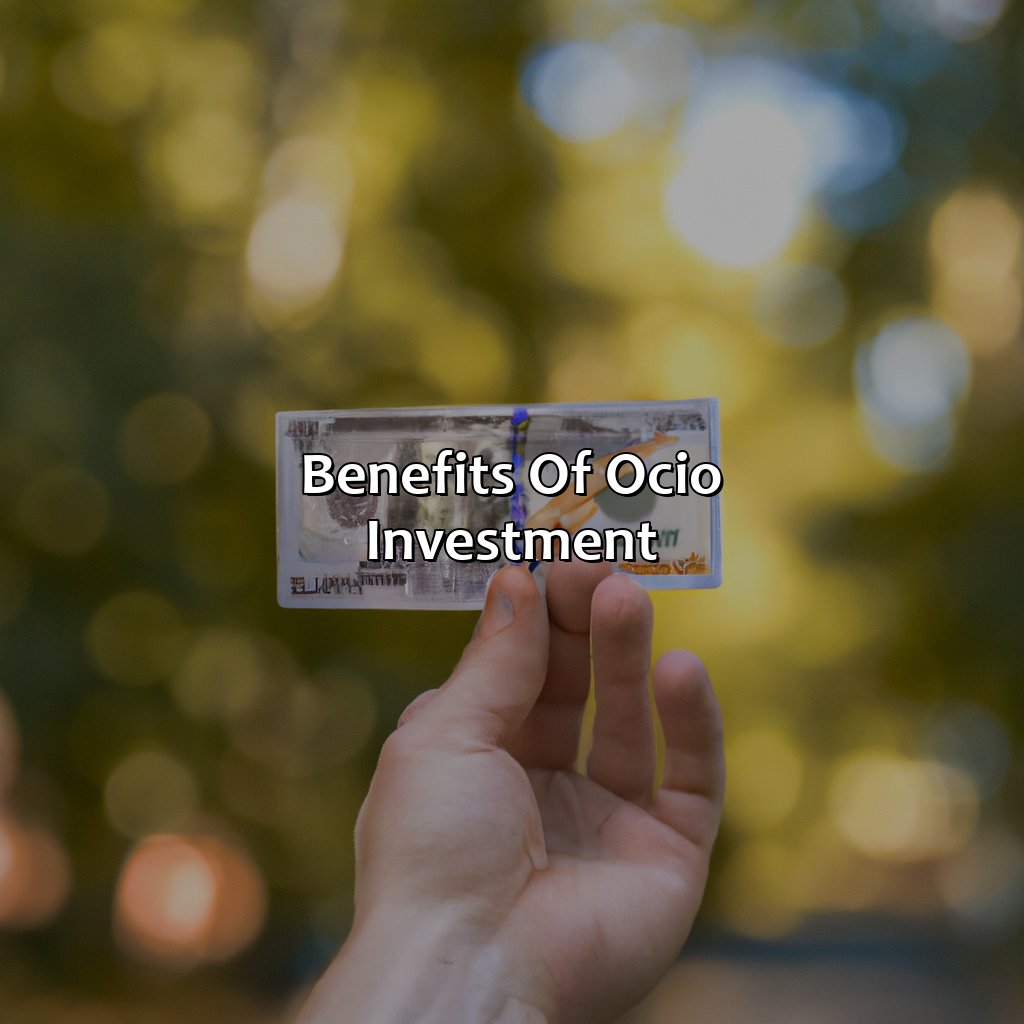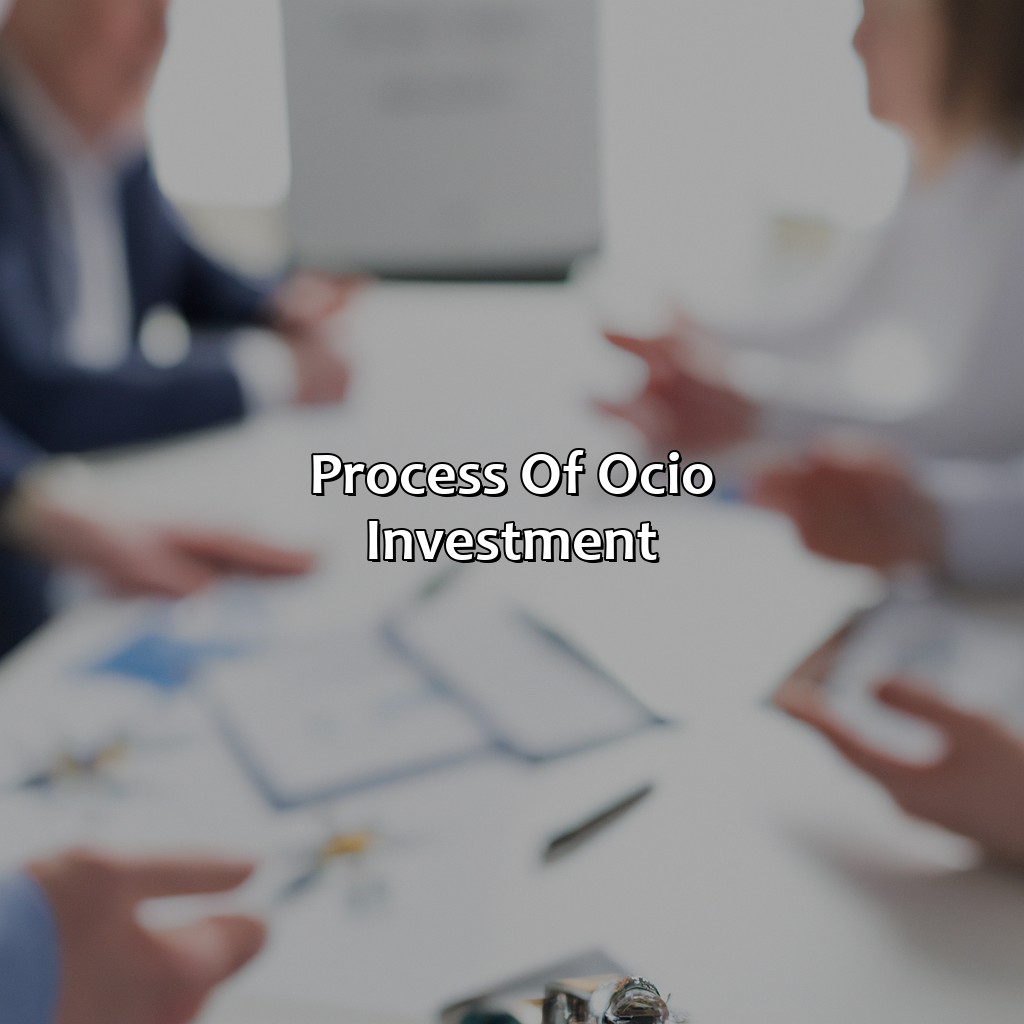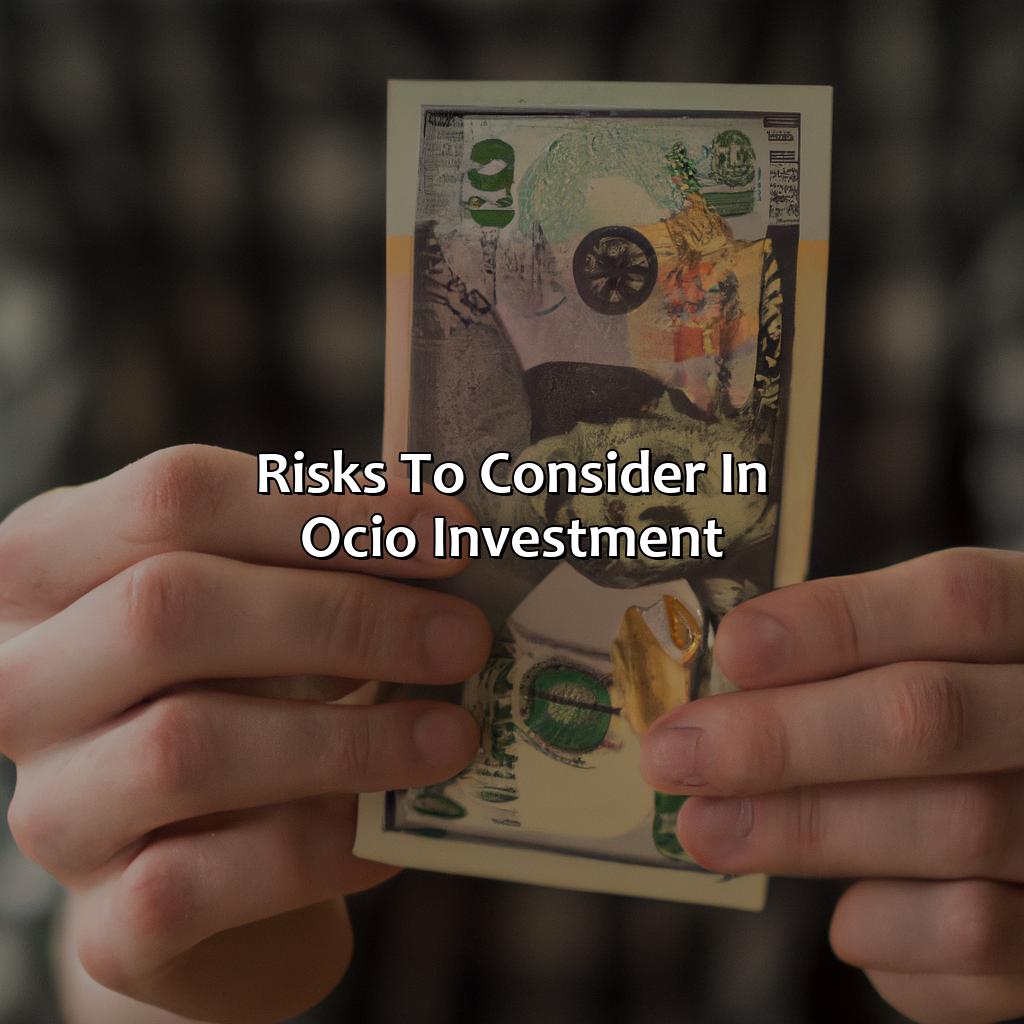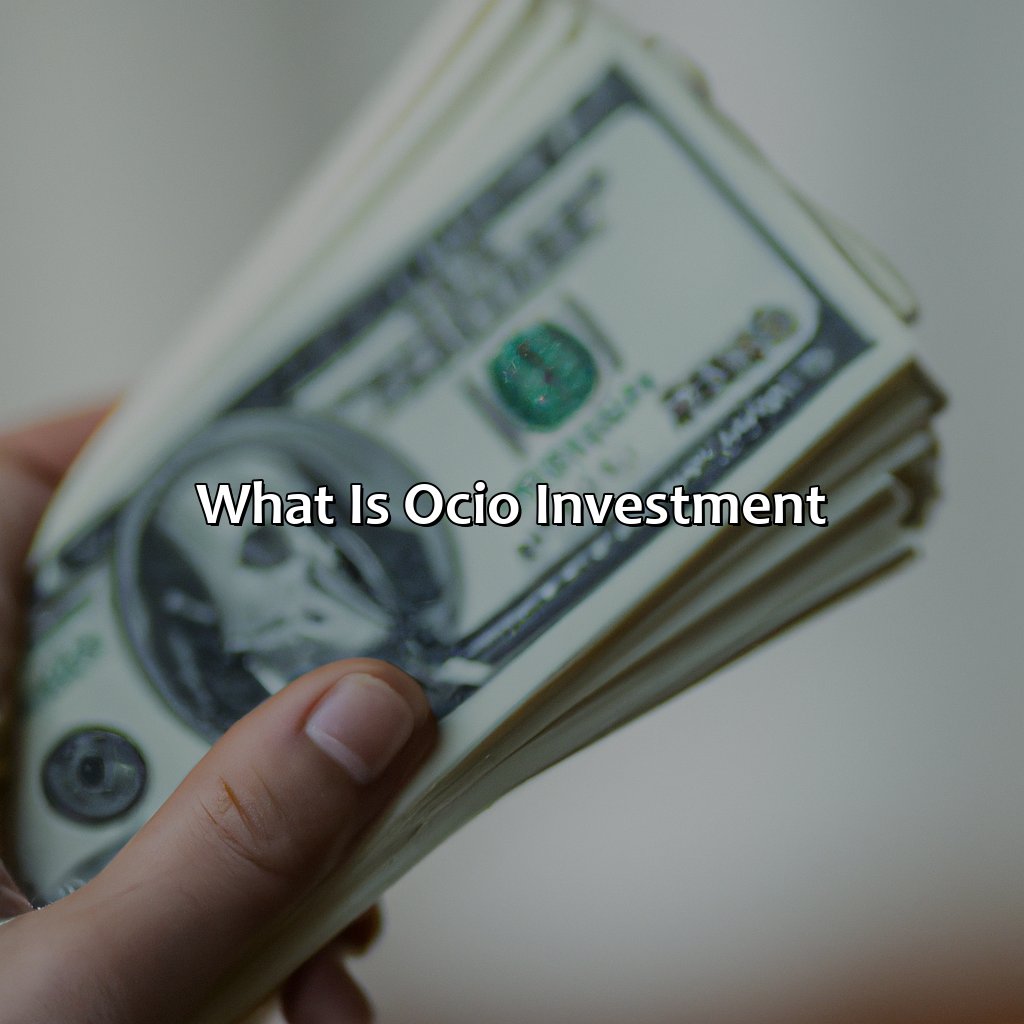What Is Ocio Investment?
Key Takeaway:
- OCIO investment stands for outsourced chief investment officer, which allows companies to outsource their investment decision making to specialized firms, giving them more time to focus on their core business operations while still benefitting from expert investment advice and customized investment plans.
- With OCIO investment, companies can benefit from customized investment plans that take into account their unique financial goals and risk tolerance, as well as independent investment advice that is not influenced by vendors or commission-based incentives.
- The process of OCIO investment involves analyzing investment needs, selecting suitable investment service providers, and continuously monitoring and reporting on portfolio performance. While there are risks involved, such as selecting the wrong service provider and monitoring and control risks, OCIO investment can provide significant benefits to companies looking to optimize their investment strategies and long-term financial outlook.
Are you unfamiliar with the concept of OCIO investment? This article will help you better understand the basics and benefits of using an OCIO solution, so you can make informed decisions for your portfolio. You’ll discover why ocio investment is becoming an increasingly popular choice for modern investors.
Benefits of OCIO Investment
Gain the most from your investments with ease! Consider OCIO investment.
This section discusses the advantages of OCIO investment. It can outsource investment decision-making, make a tailored investment plan, and give independent investment advice.

Image credits: retiregenz.com by Harry Woodhock
Outsource Investment Decision Making
By outsourcing investment decision making, an organization transfers responsibility for the investment process to a third-party expert known as OCIO. This helps organizations in reducing risk as well as improving returns on investments. OCIOs possess experience and expertise in investment strategy and execution, which ensures that the money invested by firms is utilized effectively and in compliance with investment policies.
OCIO investment allows businesses to focus on their core operations while delegating the critical decision-making process to experts. With strict risk-mitigation strategies of OCIOs, organizations can access diversified pools of assets, which increases their chances of generating successful returns. Also, eliminating internal management reduces administrative costs while allowing stakeholders more transparency and accountability in the investment process.
By leveraging sophisticated models aided by artificial intelligence algorithms, OCIOs provide real-time monitoring and analysis of potential market risks—reducing losses due to delayed response times of internal management teams. Failing to outsource investment decisions could lead to missed opportunities or high exposure towards unfavorable events—impacting revenues overall.
In today’s highly competitive market, not taking advantage of OCIO expertise can mean loss opportunities that competitors will take advantage of. Regardless of business size or industry, increased efficiency and decreased expenses with outsourced decision-making align with any firm’s goals. By partnering with an experienced OCIO provider, firms can achieve organizational growth without sacrificing operational excellence & agility.
Who needs a cookie-cutter investment plan when you can have a customized one that fits like a glove?
Customized Investment Plan
Tailored Investment Strategy is a crucial aspect of OCIO investment. This approach helps create personalized portfolios based on the clients’ overall objectives and risk tolerance. OCIO providers analyze their risk and reward preferences for long-term horizons, which involves assessing multiple factors such as expected returns, volatility, benchmarking, etc.
It’s important to note that adopting an individualistic approach to investments isn’t just about creating suitable strategies; it also involves implementing these tactics in a practical way. Unlike traditional investors or Asset Managers, OCIO investors tailor investments by selecting particular strategies suitable to execute them effectively.
OCIO Investment Consultancy works with clients according to established timeframes and spells out what they might expect from various asset classes. This collaboration fosters clear communication concerning decision-making as well as increased trust among all participants.
Advisory services are necessary components of providing frameworks for structured client engagements surrounding outcomes-based investing. Strategically aligning Investment Design with goals gives clients added visibility into the path forward and lessens the burden on them as far as identifying alternatives is concerned.
Get independent investment advice, because having your mom tell you what to invest in doesn’t count.
Independent Investment Advice
As an investor, it’s crucial to have access to reliable and unbiased advice. Independent investment advice provides you with exactly that – unaffiliated and professional counsel on how to handle your investments. By seeking independent investment advice, you can ensure that your investments are being managed objectively, without any potential conflicts of interest.
An independent investment advisor is a professional who works solely on the client’s behalf, without any affiliations with financial institutions or product providers. This means that the recommended investments are based only on the client’s unique financial goals and risk tolerance, rather than any external incentives or pressures.
Independent investment advice can also provide you with greater flexibility in terms of the types of investments available to you. Since the advisor is not affiliated with any specific financial institution or product provider, they can recommend a larger pool of investment options from various sources.
In seeking out independent investment advice, it’s important to do your due diligence and thoroughly research potential advisors. Look into their credentials and experience, as well as their track record and approach to investing.
One example of successful independent investment advice comes from a retiree we will call Jane. Jane was initially wary of paying for an independent advisor but found one who provided unbiased and transparent recommendations for her portfolio management. Through consistent guidance over several years, Jane saw significant growth in her investments while maintaining a manageable level of risk.
Investing in OCIO is like finding the perfect partner – you trust them to make the right decisions and they won’t let you down.
Process of OCIO Investment
To understand OCIO investment, you must know the strategies. These include:
- analyzing investment needs
- picking service providers
- monitoring, and
- reporting
Doing this will help you get the most out of your investments and reach your financial goals.

Image credits: retiregenz.com by Joel Jones
Analysis of Investment Needs
Investment needs analysis is an essential component of the OCIO investment process. It involves assessing the goals, risk tolerance, liquidity requirements, and investment timeline of a client to determine their optimal investment strategy. The analysis considers various factors such as current market trends, economic conditions, and legal regulations before selecting suitable investments for clients.
To execute this process effectively, a competent team that includes financial advisors, portfolio managers, and investment analysts work together to identify investment objectives carefully. They then formulate strategies that cater to unique client needs while ensuring that their objectives will be met in a risk-managed manner.
Investment needs analysis is a critical phase in the OCIO model since it helps create customized solutions tailored to each client’s requirements. It provides an avenue for making informed decisions on asset allocation, risk management strategies, and diversification options.
It is worth noting that as wealth accumulation grows in complexity over time, the need for comprehensive and detailed analysis has increased. According to The Cerulli Report (2021), 48% of institutions globally expect to increase their allocation toward alternative investments in the next three years.
Therefore, Investment Needs Analysis remains an integral part of creating long-term value by aligning tailored investment policies with specific organizational or individual goals through careful selection criteria evaluated within a managed accountable construct.
Choosing an investment service provider is like selecting a dance partner – you want someone who’s experienced, reliable, and won’t step on your toes (or your portfolio).
Selecting Investment Service Providers
Investment Service Provider Selection
Selecting investment service providers is a crucial part of OCIO investment process. Here are five key points to consider when choosing an investment service provider:
- Expertise: Look for an investment service provider who has extensive knowledge and experience in the area that you need help with.
- Reputation: Research the reputation of the potential service provider by checking references, reading reviews and analyst reports.
- Technology: Ensure that the provider can match your technological needs.
- Fee Structure: Analyze the fee structure of potential providers to ensure that it matches your budget and financial goals.
- Communication Skills: Effective communication with your investment manager and decision-makers is essential, so select a partner who has exceptional communication skills.
It’s vital to note that selecting generalist wealth managers cannot provide optimal support for specific areas such as hedge funds or real estate.
In addition to these five factors, consider how a potential partner aligns with your organizational culture.
Missing out on finding the right investment service providers may lead to substandard returns, high costs, and unfulfilled objectives. So, take ample time in evaluating multiple options before making a final decision.
Keeping tabs on your investments is like stalking your ex on social media; you know you probably shouldn’t, but you just can’t resist.
Monitoring and Reporting
The Oversight and Accountability segment of the OCIO investment process employs monitoring and reporting to monitor portfolio performance, track progress towards goals, identify potential risks, and provide timely updates to stakeholders. Utilizing advanced analytics tools and technology empower informed decisions on the portfolio’s direction.
This monitoring process employs robust data analysis on several key measures, including investment performance, manager risk ratings, asset allocation, portfolio liquidity, and total expenses incurred. By automating this tracking methodology within an established workflow framework, the reports generated become systematic without sacrificing quality or accuracy.
Furthermore, a successful reporting strategy involves transforming this complex data into easily understood summaries for key stakeholders. Utilizing user-friendly interfaces, intuitive dashboards, and clear graphical representations allows investors to access real-time measurement on investment performances through various market scenarios.
Reporting is not a stand-alone task but rather an integral component of the entire process of OCIO Investment management. It empowers decision-making activities by creating a streamlined system that ultimately informs style adjustments which can lead to better meeting and exceeding expected results.
OCIO investment is like a game of chess – you just have to assess the risks of each move before you make it.
Risks to Consider in OCIO Investment
To steer clear of OCIO investment risks, selecting the appropriate service provider and having correct checking and control is vital. This part on risks related to OCIO investment handles such worries. In the following subsections – Selecting the Right Service Provider and Monitoring and Control Risks – we will shortly introduce how to reduce the dangers linked with OCIO investment.

Image credits: retiregenz.com by James Washington
Selecting the Right Service Provider
One of the crucial aspects to consider when investing through OCIO is choosing the right service provider. A careful selection of providers can ensure a favorable investment outcome. Factors that need consideration include expertise, experience, track record, infrastructure and fee structure.
Choose a partner with relevant experience, who has demonstrated skills in managing and advising on similar mandates. Verify their track record by examining their past performance against targets to ascertain credibility. Evaluate the infrastructure used by the provider such as technology, research capabilities and risk management tools.
Ensure that you understand the type of relationship offered by your potential service provider and choose someone that aligns with your values and investment objectives. Use a process-oriented approach to evaluate fee structures and negotiate transparent terms.
To maximize benefits from OCIO investment, it’s essential to select the right service provider that can provide tailor-made solutions for clients’ specific needs.
Investment monitoring is like a game of whack-a-mole, but instead of moles, it’s risks popping up all over the place.
Monitoring and Control Risks
The potential risks of delegating investment management to an Outsourced Chief Investment Officer (OCIO) make it crucial to consider the Monitoring and Control Risks. These risks are associated with the lack of direct control over the investment decision-making process.
To ensure adequate monitoring and control, institutional investors must:
- conduct thorough due diligence on potential OCIO candidates
- employ experienced staff to oversee and manage the relationship with the provider
- establish clear expectations regarding service level agreements and reporting requirements
- regularly review performance reports
Furthermore, institutions must remain vigilant when building risk management frameworks that include:
- clearly defined investment objectives and guidelines
- ensure transparency in the portfolio construction process
- monitor changes in market trends that could impact asset allocation decisions
- keep track of ongoing costs associated with implementing a new structure
In summary, by taking a proactive approach to managing Monitoring and Control Risks in an OCIO investment structure, institutions can better mitigate potential hazards while potentially improving performance outcomes.
Some Facts About Ocio Investment:
Ocio Investment is a digital investment platform that allows individuals to invest in global startups and small businesses. (Source: Ocio Investment)
The platform offers investment opportunities in various sectors, including technology, healthcare, and real estate. (Source: Ocio Investment)
Investors can start investing on the platform with as little as $50. (Source: Ocio Investment)
Ocio Investment provides curated investment options and due diligence, making it easier for investors to make informed investment decisions. (Source: Ocio Investment)
The platform has a user-friendly interface and provides investors with real-time updates on their investments. (Source: Ocio Investment)
FAQs about What Is Ocio Investment?
What is OCIO investment?
OCIO stands for Outsourced Chief Investment Officer. An OCIO investment is a management style that involves outsourcing the responsibility of investment decisions to a third party provider. This provider assumes the role of the chief investment officer (CIO) for the organization.
Who should consider OCIO investment?
Any organization that has significant investments and needs expertise in managing them can benefit from OCIO investment. OCIO providers typically work with pension funds, endowments, foundations, and other institutional investors.
What are the benefits of OCIO investment?
The benefits of OCIO investment include gaining access to more sophisticated investment strategies, receiving expert guidance on investment decisions, and having access to a team of investment professionals without incurring the costs of an in-house team.
What types of services do OCIO providers offer?
OCIO providers offer a wide range of investment services, including asset allocation, manager selection, risk management, and performance monitoring. Some providers also offer additional services, such as ongoing education and training.
What should I look for in an OCIO provider?
When selecting an OCIO provider, it’s important to consider their experience, expertise, and track record. Look for a provider that has experience working with organizations similar to yours and that has a proven track record of generating strong investment returns.
What are the costs associated with OCIO investment?
The costs associated with OCIO investment vary depending on the provider and the services they offer. Typically, OCIO providers charge a fee based on a percentage of assets under management. It’s important to carefully review the fee structure and ensure that it aligns with your organization’s investment goals and objectives.
 Checkout this IRS Loophole
Checkout this IRS Loophole 
